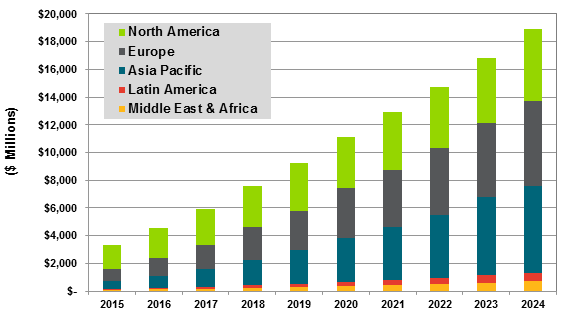- Urban Mobility
- Autonomous Vehicles
- Carsharing
- ridesharing
- Ford
Mobility Services Target Driving Less (or at Least More Efficiently)

The problem of urban congestion includes both too many cars simultaneously on the road and too few places to park them. New mobility services from Ford and Lyft are using data analytics and last-mile ridesharing to solve these twin challenges.
Increasing urbanization (82% of people now live in urban areas in North America, according to the United Nations) is intensifying the pressure on city streets and roadways and encouraging more urban dwellers to forego owning a car because of the expense and hassle of finding a place to park. Realizing that vehicle sales to city residents may start to flatten, automakers (including Ford) are diversifying their revenue streams with mobility services.
The recently unveiled FordPass app enables any car owner to pre-book a parking space in garages in more than 160 cities. FordPass also includes phone access to humans to help customers get around in traffic or find other mobility options, and the company also opened its first FordHub mobility storefront in San Francisco. When you also consider the company’s FordPay payment service, it’s clear that the automaker isn’t afraid to borrow from a certain Cupertino company’s playbook. (What’s next, the iFordFone?)
Autonomous Future
Ford also continues to march toward releasing a fully autonomous vehicle. The automaker recently invested in lidar manufacturer Velodyne’s autonomous sensing technology. Ford also announced its intention to produce a fully autonomous car by 2021 for use in ridesharing services. Uber, Lyft, and many other companies see taking those pesky compensation-seeking drivers out of the equation as the future of ridesharing.
Guidehouse Insights forecasts that annual mobility services revenue will reach $4.8 billion in 2020. Automakers will play a significant role in these services, which include carsharing and ridesharing services, congestion charging programs, EV charging services, intelligent traffic management, and smart parking systems.
Smart Urban Mobility End-User Services Revenue by Region, World Markets: 2015-2024
If an autonomous vehicle is electric, it would reduce urban emissions while also addressing the problem of limited parking. If used to get people to and from mass transit stations, ridesharing programs can reduce the overall vehicle miles traveled by removing trips into the city core. Such is the case in the Denver suburb of Centennial, where light rail customers can request a free Lyft ride if they live near the Dry Creek train station. While using tax dollars to put people in private cars may seem counterintuitive, if it increases the utilization of light rail, it can be viewed as a net positive in solving the last mile challenge and reduce the cost when compared to limited-use bus services. Employees who work for XOJET, which provides luxury rides above the clouds, can also now access Lyft to get to and from their hotels and airports while they are accommodating the jet-setter crowd.
